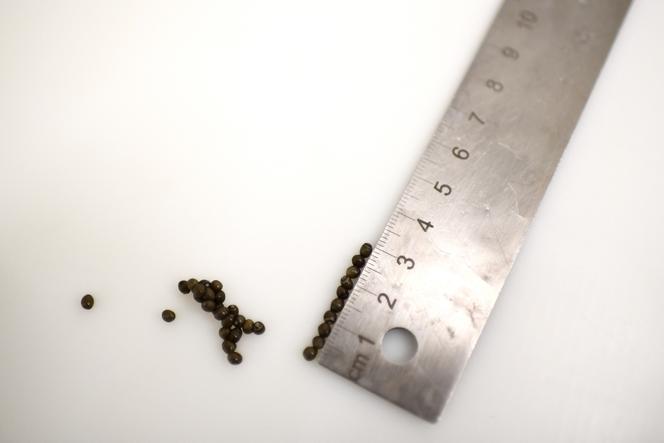


For the festive season, gourmets are sometimes tempted by caviar at bargain prices in supermarkets. Sturgeon eggs are therefore a flagship product on the shelves. Or a means of luring the French into opening their wallets and filling their shopping baskets. It's a highly sought-after extravagance.
This caviar is often Italian, the country priding itself on being Europe's leading producer, at 65 tons. Italy occasionally sells caviar at a low price. This is due to the fierce battle being waged by competitors on every continent – the big caviar fish. The most recent arrival is not the least voracious, in this case the Chinese company Kaluga Queen. "In 2011, China decided to pre-empt the market," explained Laurent Dulau, director of Kaviar, known for its Sturia brand. "The country became the world's leading producer, weighing in with 250 to 280 tons, of which 200 tons was produced by Kaluga Queen." It's a saga beginning in the Amur River, where two species of sturgeon – schrenki and dauricus – spawned, their hybrid now populating fish farms.
This rising tide from China is destabilizing the markets. All the more so as caviar – a fresh and delicate product – is unlikely to remain sitting in storage. It has to be sold, and prices are falling. That's enough reason to set world number-two producer, Italy's Agroittica, on tenterhooks. All the more so as it sees a new adversary in neighboring waters, ready to pip them to the post: Poland's Antonius Caviar has passed the 40-ton mark.
Caviar also comes from Bulgaria, the USA, Vietnam and even Madagascar. But, despite preconceived ideas, it doesn't come from Russia, where unlimited exploitation of wild sturgeon wiped out the resource, ending in disaster for the fish. Fish farming took over, and sturgeon farms are springing up wherever money and water flow freely. The result: according to Dulau, is that "in 11 years, annual world production has multiplied by 2.5, reaching 600 tons, while the value of the caviar market has remained unchanged at around €1 billion."
Meanwhile, French production of the precious black roe, is established at 50 tons, but French producers would like to be prominent on the shelves. Four companies – Caviar House & Prunier, Groupe Kaviar, L'Esturgeonnière and Caviar de France – have decided to put their eggs in the same basket to obtain a Protected Geographical Indication (PGI). "By 2024, we'll be certified as Caviar d'Aquitaine," enthused Olivier Cabarrot, CEO of Caviar House & Prunier. He quoted a price range of between €2,250 and €8,000 per kilogram for this French delicacy, putting it into perspective against the length of time sturgeon are farmed. That's seven years for baeri, nine years for osciètre and 12 to 15 years for beluga. With the PGI, Aquitaine caviar is lays claim to clarity in a shadowy world, seeking to benefit from the added value linked to its rarity. French caviar is swimming against the tide, in between the big fish...
